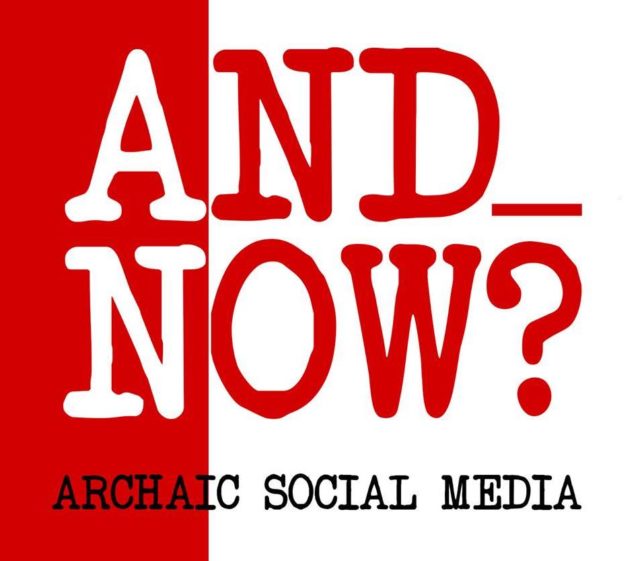
Understanding Arts Wire in the Age of Twitter
Abigail Cloutier

If Arts Wire was ahead of its time, nevertheless participation on Arts Wire provided confidence and experience in working online that greatly contributed to the rich and diverse presence of the arts in contemporary Internet.
– Judy Malloy
I received an email from the University of Washington’s School of Art + Art History + Design describing an opening intern position with pioneering alum, Anne Focke. The main purpose of the internship was to create an archive for Arts Wire, a national computer-based bulletin system formed in 1989 for artists, arts groups, funders, and many more to connect online prior to public awareness of the Internet. Meeting with Anne, I was eager to inquire about specifics and learn what it was all about. However, I discovered that my questions could not be fully answered quickly as it would take multiple sit downs with Anne and fellow interns to really begin to digest the work that has been done and, conversely, the work we are doing (or attempting to do) now.
Disclosure: I am still not exactly certain of what it all means. As a technologically “savvy” millennial, I’ve found it hard to wrap my head around Arts Wire: what it was, what it is, who used it, and what we should do with its findings today. But by doing some research, I gain more clarity bit by bit. Judy Malloy, an early and consistent member of the Arts Wire team, described the platform in her book Social Media Archeology and Poetics: “Before Internet usage was ubiquitous, in an era when every time the technology was mastered, it changed, Arts Wire’s strong presence on the Internet, its emphasis on bringing the nonprofit arts community online, greatly contributed to the early presence of the arts on the Internet.” 1
As a technologically “savvy” millennial, I’ve found it hard to wrap my head around Arts Wire.
Arts Wire came into being following the 1988 Orcas Conference: Creative Support for the Creative Artist, a gathering of 200 artists, artists’ organizations, and private and public funders all aiming to find fresh ways of supporting artists both locally and nationally. At the time, “logging on” involved a computer, which not everyone had, a modem, and patience with the technological limitations of the time. Arts Wire created a user manual and found itself at the center of the online arts community, connecting artists, funders, and arts groups from very distant points, geographically and culturally.
While I am beginning to grasp what Arts Wire is, I am just beginning the journey of what it means for us today. Joe Matuzak is quoted in Malloy’s book as saying, “In many ways Arts Wire led the way. That meant we made the mistakes, but it also meant there were a lot of times we mapped out new terrain.” The material we twenty-somethings are reading for the first time is history, but it is still alive and kicking. Seasoned artists like Anne, Judy, and countless others lived through this time of exploration. They cultivated a new field and were determined to find solutions to connect and empower artists and nonprofit communities.
The material we twenty-somethings are reading for the first time is history, but it is still alive and kicking.
Contemplating these accomplishments, I cannot help but consider the ease of our own interactions on the Internet today. In some ways, it is a fulfillment of Arts Wire’s vision to bring about instant communication for varying artistic communities. However, if it weren’t for my seeing the internship advertised by UW, I would never have known of the pivotal influence of Arts Wire and other early online networks on websites like Tumblr, or even Facebook. It may take some time to understand all of it, but exploring what Arts Wire was created to be and what it accomplished has given me a broader appreciation for what it means to work for your right to express your opinions, to share critical information, and to remain engaged in a community you care deeply about.
Arts Wire is living history and this is a lesson that we in the age of instant WIFI, simple URLs, and access at the click of a cursor or touch of a screen would do well to read, study, and acknowledge.

Abby Cloutier is a undergraduate student in Art History who will be returning to the UW School of Art + Art History + Design in fall 2017. She was with us just for spring quarter and wrote this piece after being part of the team for only a few weeks. For the rest of us, it was both interesting and useful to remember what it was like to confront this material for the first time.
Notes
- Social Media Archeology and Poetics, edited by Judy Malloy, the MIT Press, 2016.
![]()
1 Comment